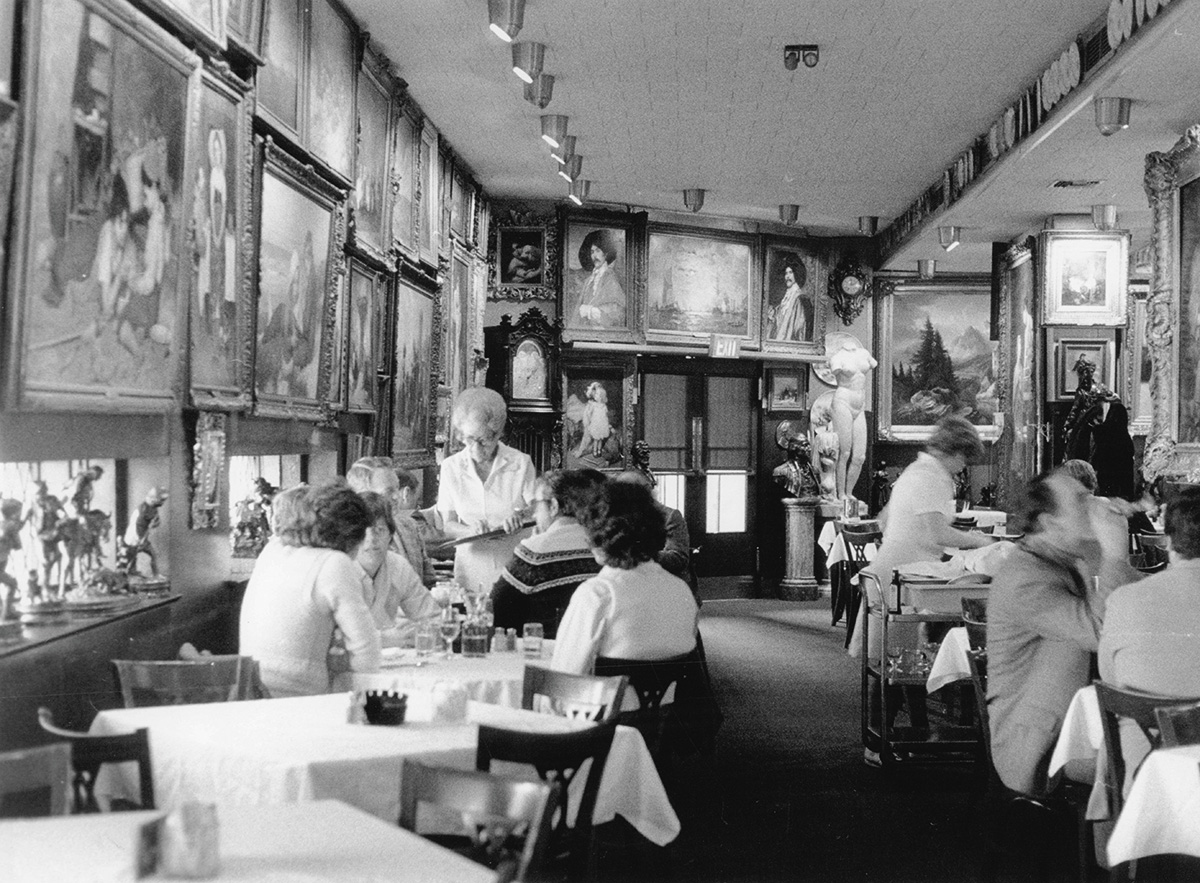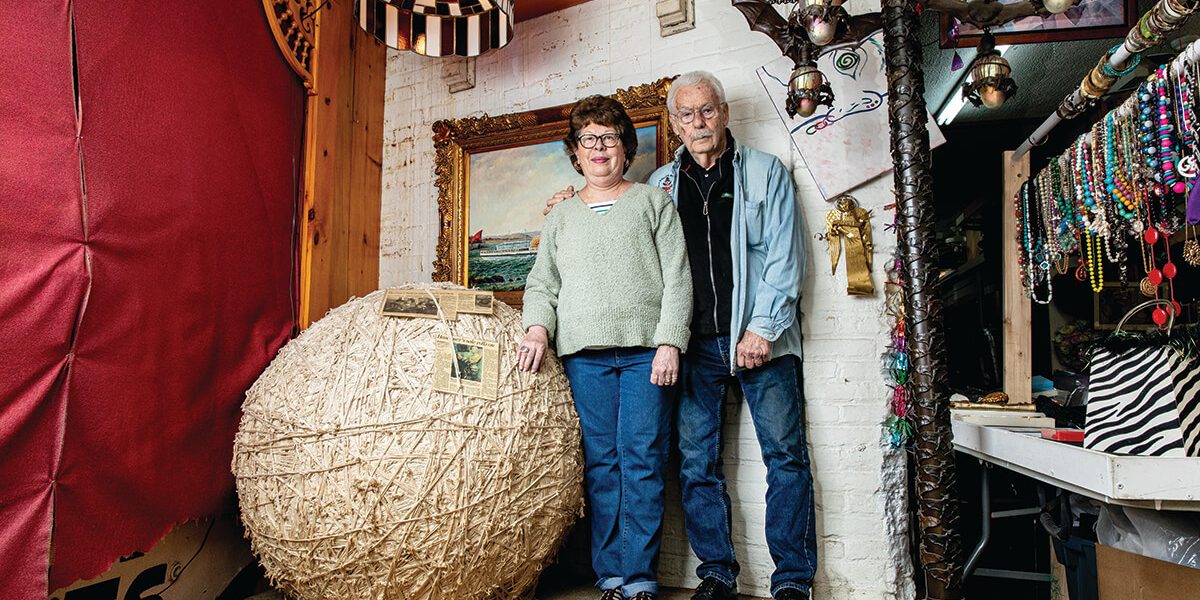News & Community
The Story Behind Haussner's Massive Ball of String
Waitresses created the 825-pound ball of napkin strings over more than 30 years.
“I knew it was going to be a good day when the ball of string sold for $8,000,” Richard Opfer recalls with a chuckle.
Twenty years ago, the Timonium auction-house owner organized the sale of Haussner’s Restaurant’s one-of-a-kind assemblage of art, kitsch, and kitchen keepsakes. The initial high-end mass auction of bronze busts, Whistlers, Rembrandts, and Roman sculptures from the beloved German dining institution had been handled by Sotheby’s in New York, garnering more than $10 million.
The leftovers: minor works, old menus, and memorabilia, including the epic 825-pound ball of twine—19 million napkin strings cobbled together by bored waitresses over more than three decades—was proffered locally, garnering another $2 million.
“It was the most people we’ve ever had here, before or since. Lines outside, more than 1,000 people,” says Opfer, who managed to roll the giant sphere out of Haussner’s and into a box truck with the help of three assistants. “Never seen anything like it. People just wanted a piece of the place.”
For recent Baltimore arrivals who missed the restaurant’s near-three-quarter-century run: Haussner’s was opened on Eastern Avenue in 1926 by William Henry Haussner, a Bavarian master chef who reportedly cooked for Kaiser Wilhelm II before immigrating here. He was joined by his wife, Frances, who also fled Deutschland during its 1920s depression and ran the front of house.
Mrs. Haussner cut a trim, elegant figure in the celebrated, if calorie-laden restaurant, and she proved the art connoisseur in the family, convincing her skeptical husband that people enjoyed eating in beautiful spaces. The generously portioned cuisine unsurprisingly leaned heavily into Teutonic favorites such as sauerbraten, hasenpfeffer, Vienna meatloaf, Wiener schnitzel, and the knock-, brat-, liverwurst troika. The strawberry pie, topped with a tower of whipped cream, is missed to this day.
“Nouvelle cuisine passed right over Highlandtown,” Francie Haussner George, the founders’ daughter, once said. At its peak, they served more than 1,500 dinners on Saturday night. At the end, it was still doing 900-plus. “It was just time,” George says of the restaurant’s closing. The ’80s and ’90s had been rough for Highlandtown, and that likely factored into the decision.
Today, however, the Highland Haus—a condominium replete with garage parking, “sky lounge,” and dog-washing and electric-car-charging stations—sits atop the former location. An upscale wine and beverage store (kombucha, spiced cider, mead) has opened on the first floor. There’s also a CrossFit gym across the street and yoga studios nearby. Meanwhile, the famous globe of linen twine has never been far away.
“I told my wife, Debbie, when I went to the auction I was prepared to go as high as $15,000 or $17,000,” says Bob Gerber, owner of The Antique Man in Fells Point and a retired county bus mechanic. “No way I was going to let it leave Baltimore.”
Early on, the big ball proved a tourist attraction for the store, paying for itself, says Gerber, who also owns the huge steel pink pig that for 79 years hung over Joe Siemek’s butcher shop on Fleet Street. Old timers in Fells Point might recall the pig was outlined in neon on a big sign, “Eat Joe’s Meats.”
“We bought that to keep it in the neighborhood, too,” Gerber explains. “I could’ve sold that pig and the ball of string hundreds of times. They have not been for sale.”
Today, the main attractions at Antique Man are a skeleton of the son of Dracula; the body of a 12-foot, two-headed man; a four-legged chicken; a severed foot; as well as a religious icon reputedly containing a sliver of wood from the cross of Jesus. Gerber says people still come in from time to time and tell him they still have a picture, taken when they were children, sitting on top of Haussner’s linen string orb. Now 77, Gerber’s clearing inventory himself to move into a smaller store next door.
“Where would I like to see the ball go when I’m done? To me, the ball of string represents all those waitresses who worked at Haussner’s for decades. Some for 50 and 60 years. I’d like the owners of that condominium to put it in their lobby,” Gerber says. “That’s where it belongs. It’s a monument. I’d love to see it go back home.”

